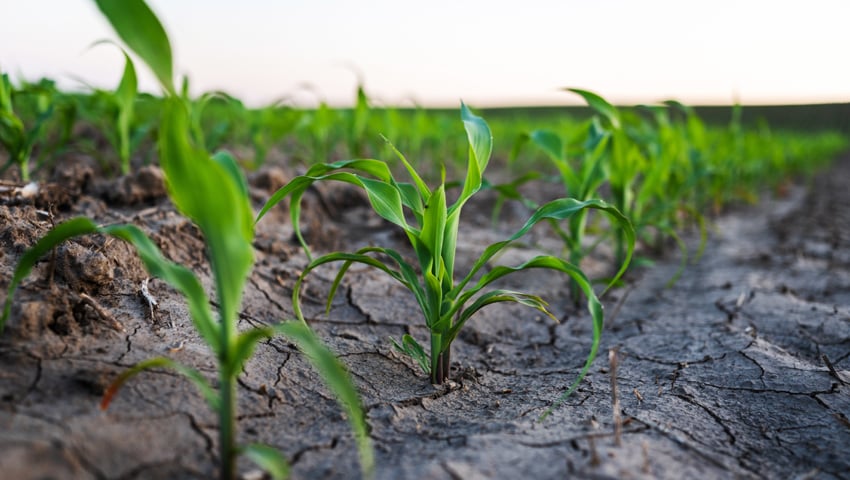The Environment Agency has urged water companies to do more to safeguard water supplies after the driest start to spring in 69 years.
The environmental regulator convened a meeting of the National Drought Group this week and said more needed to be done to cut leakage and help customers use water more wisely.
In England, March was the driest since 1961 and April received just half its normal rainfall. Farmers have had to start irrigating crops earlier and reservoir levels are either notably low or exceptionally low across the North East and North West of England. Both these regions have seen their driest start to the year since 1929.
Representatives from the EA told the meeting – which includes the Met Office, government, regulators, water companies, farmers and conservation experts – that while no area is currently officially in drought there is a medium risk of one this summer without sustained rainfall.
Chairing the meeting, Environment Agency Deputy Director of Water, Richard Thompson, said, “The changing climate means we will see more summer droughts in the coming decades. The last two years were some of the wettest on record for England but drier conditions at the start of this year mean a drought is a possibility and we need to be prepared.
- A dry start to the year means farmers have had an earlier start to the irrigation season and have seen an increased demand on their on-site storage reservoirs
- Reservoir storage across England is 84 per cent of total capacity. This compares to 90 per cent at the end of April in the 2022 drought year
- River flows are currently below normal or lower for this time of year across northern and central England
- Chalk groundwater levels are generally in a good position
- Wildfires have been reported in Cumbria, Derbyshire and Dorset as vegetation is dry
The Agriculture and Horticulture Development Board (AHDB) reported that after one of the best spring planting windows in recent memory, UK farmers are now facing growing concerns over dry weather conditions.
Cereal crops showing signs of stress
April saw just 56 per cent of the average rainfall across the UK, with temperatures also well above seasonal norms. While this helped spring cereal planting progress swiftly, emerging crops – particularly spring barley – are now showing signs of stress.
Helen Plant, AHDB Senior Analyst (Cereals & Oilseeds), said, “While the dry conditions supported rapid spring sowing, the lack of follow-up rain is now putting pressure on crop development. We’ve seen variation across regions, with some areas benefitting from mid-April showers while others continue to struggle. This could affect yield potential if dry conditions continue in May.”
Low disease pressure has so far been a silver lining, though yellow rust is becoming more frequent in winter wheat and there have been reports of gout fly damage. The dry spell has also complicated weed control in some winter cereals.
Despite the recent challenges, early indicators suggest this year’s winter crops are faring better than those in 2024, although they remain behind the strong seasons of 2023 and 2022. Initial signs for spring cereals are promising, though longer-term outcomes will depend heavily on weather patterns in the coming weeks.
